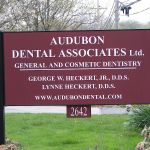How to Prevent a Tooth Abscess: Essential Tips and Care
- 1. Understanding a Tooth Abscess
- 2. Recognizing the Signs and Symptoms of a Tooth Abscess
- 3. Common Causes of a Tooth Abscess
- 4. How to Prevent a Tooth Abscess
- 5. Treatment Options for a Tooth Abscess
- 6. Case Study: Preventing a Tooth Abscess
1. Understanding a Tooth Abscess
A tooth abscess is a painful condition that occurs when a bacterial infection causes a pocket of pus to form around the root of a tooth or in the gums. This infection typically starts when a cavity or gum disease is left untreated, allowing bacteria to thrive and cause significant damage.
While a tooth abscess can be a very painful experience, understanding what it is and how it develops is key to preventing it from happening in the first place. Essentially, a tooth abscess is the body’s response to an infection in the tooth or the tissues surrounding it. The pus is the result of your body fighting the infection.
2. Recognizing the Signs and Symptoms of a Tooth Abscess
Before a tooth abscess becomes unbearable, there are several symptoms you should be aware of. Early detection is crucial for preventing the condition from worsening. Here are the most common signs:
- Severe Tooth Pain: A tooth abscess often causes intense, throbbing pain, especially when you chew or touch the affected tooth.
- Swelling of Gums: The gum area around the infected tooth may become swollen and tender to the touch.
- Fever: An abscessed tooth can trigger a mild fever as the body fights the infection.
- Bad Taste in Mouth: An abscess may cause a foul taste due to the pus leaking into your mouth.
- Sensitivity to Temperature: A tooth with an abscess may be sensitive to hot and cold temperatures.
If you experience any of these symptoms, it is crucial to seek dental care immediately to prevent further complications.
3. Common Causes of a Tooth Abscess
There are several common causes of tooth abscesses. Understanding these factors can help you reduce your risk of developing an infection:
- Untreated Cavities: Cavities are a major cause of tooth abscesses. If left untreated, bacteria can enter the inner tooth and cause an infection.
- Gum Disease (Periodontitis): Gum infections can lead to pockets of infection around the tooth roots, leading to abscesses.
- Tooth Trauma: A cracked or chipped tooth can allow bacteria to penetrate the tooth, leading to an abscess.
- Weak Immune System: Individuals with compromised immune systems are more susceptible to infections, including tooth abscesses.
- Poor Oral Hygiene: Inadequate brushing and flossing habits can lead to plaque buildup and increase the likelihood of tooth decay and gum disease.
By understanding these causes, you can take preventive measures to avoid tooth abscesses.
4. How to Prevent a Tooth Abscess
Preventing a tooth abscess involves maintaining good oral hygiene and taking care of your teeth and gums. Here are some proven tips to help prevent tooth abscesses:
- Brush and Floss Daily: Brush your teeth at least twice a day using fluoride toothpaste and floss once a day to remove plaque and food particles that can cause tooth decay and gum disease.
- Visit the Dentist Regularly: Regular dental checkups allow your dentist to catch early signs of tooth decay or gum disease, preventing more serious issues like abscesses from developing.
- Repair Cavities Immediately: If you notice a cavity or any damage to your teeth, see a dentist as soon as possible to prevent bacteria from entering and causing an abscess.
- Rinse with Saltwater: Rinsing your mouth with saltwater can help reduce bacteria buildup in your mouth and promote gum health, reducing the risk of infection.
- Eat a Balanced Diet: Avoid excessive sugary foods and drinks that feed bacteria in your mouth, and focus on a healthy diet rich in vitamins and minerals that support oral health.
- Quit Smoking: Smoking weakens your immune system and increases the risk of gum disease, which can contribute to the development of a tooth abscess.
By following these steps, you can significantly reduce your risk of developing a tooth abscess and keep your mouth healthy for years to come.
5. Treatment Options for a Tooth Abscess
If you do develop a tooth abscess, there are various treatment options available. It is important to seek dental care as soon as possible to prevent the infection from spreading:
- Antibiotics: Your dentist may prescribe antibiotics to help control the infection, especially if the abscess is severe or spreading.
- Drainage: If the abscess has formed a visible pocket of pus, your dentist may need to drain it to reduce the infection and relieve pain.
- Root Canal: In many cases, a root canal is necessary to remove the infected tissue and save the tooth.
- Tooth Extraction: If the abscess is severe and the tooth is beyond saving, your dentist may recommend removing the tooth to prevent the infection from spreading.
It’s crucial not to delay treatment, as untreated abscesses can lead to serious health complications, including the spread of infection to other areas of the body.
6. Case Study: Preventing a Tooth Abscess
Meet Sarah, a 32-year-old woman who had been struggling with inconsistent oral care. After skipping her routine dental checkups for several years, she noticed a painful swelling near her gumline. After seeking dental help, Sarah was diagnosed with a tooth abscess caused by untreated cavities and gum disease.
Her dentist performed a root canal to save the tooth and prescribed antibiotics to fight the infection. Sarah now follows a diligent oral care routine and schedules regular checkups to prevent future dental issues, including abscesses.
This case highlights the importance of regular dental visits and good oral hygiene to prevent tooth abscesses before they become a serious issue.







 Smile Works Dentistry & Orthodontics in La Mirada4.0 (53 review)
Smile Works Dentistry & Orthodontics in La Mirada4.0 (53 review) Long Lake Family Dentistry5.0 (247 review)
Long Lake Family Dentistry5.0 (247 review) Brilliant Endodontics4.0 (263 review)
Brilliant Endodontics4.0 (263 review) Ideal Smile Dental - Bensalem4.0 (602 review)
Ideal Smile Dental - Bensalem4.0 (602 review) Perry Street Dental5.0 (200 review)
Perry Street Dental5.0 (200 review) Audubon Dental Associates Ltd5.0 (6 review)
Audubon Dental Associates Ltd5.0 (6 review) The Importance of Oral Health Education During Pregnancy for a Healthy Pregnancy
The Importance of Oral Health Education During Pregnancy for a Healthy Pregnancy Best Tips for Brushing Your Teeth Properly for Healthy Gums: Essential Techniques for Oral Health
Best Tips for Brushing Your Teeth Properly for Healthy Gums: Essential Techniques for Oral Health Why Skipping Dental Checkups Can Lead to Bigger Oral Health Problems
Why Skipping Dental Checkups Can Lead to Bigger Oral Health Problems Advantages of Porcelain Dental Restorations
Advantages of Porcelain Dental Restorations How Can Diabetes Cause Tooth and Gum Problems? Preventing and Managing Oral Health Issues
How Can Diabetes Cause Tooth and Gum Problems? Preventing and Managing Oral Health Issues Healthy Habits for Promoting Good Oral Health and Hygiene: Tips for a Healthy Smile
Healthy Habits for Promoting Good Oral Health and Hygiene: Tips for a Healthy Smile